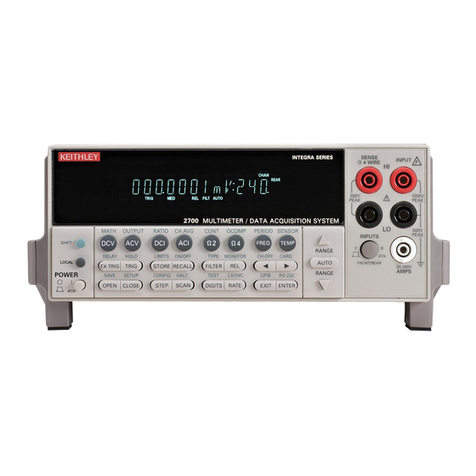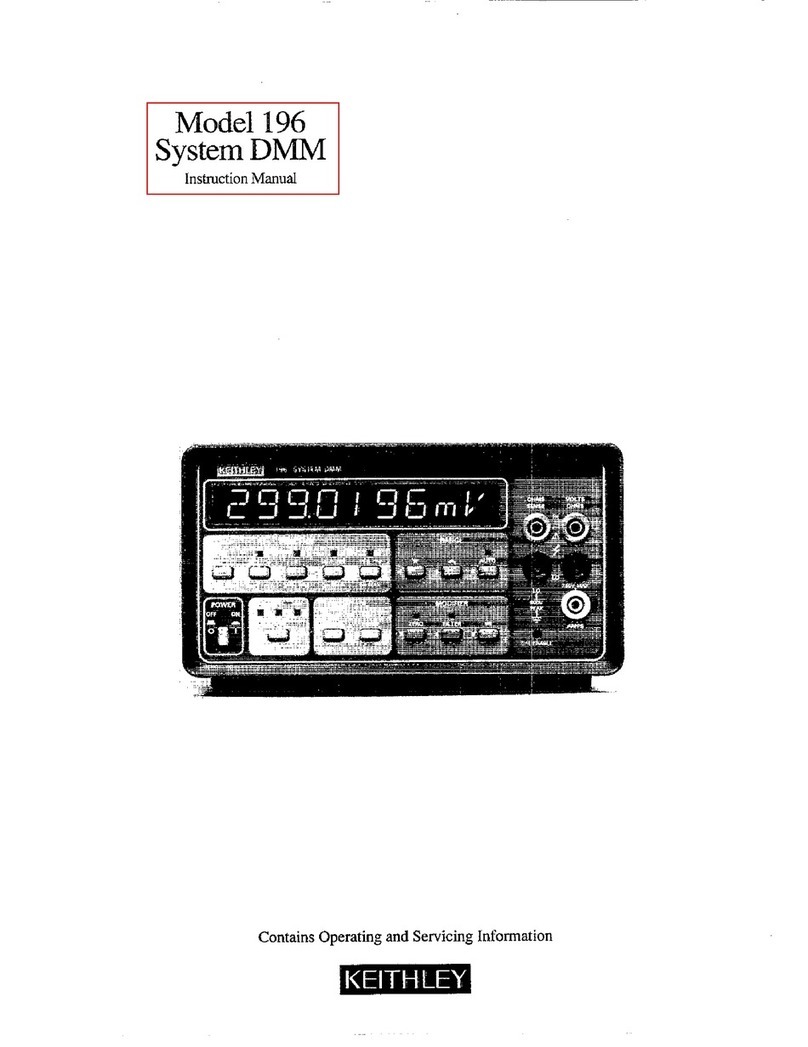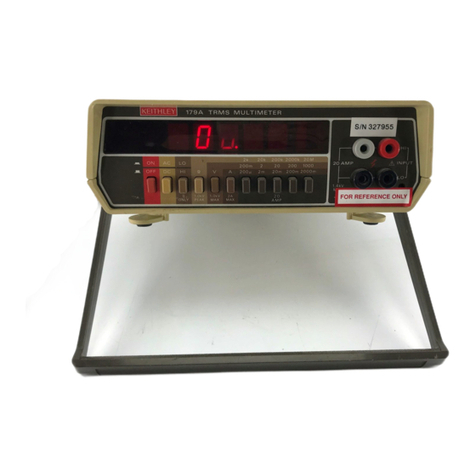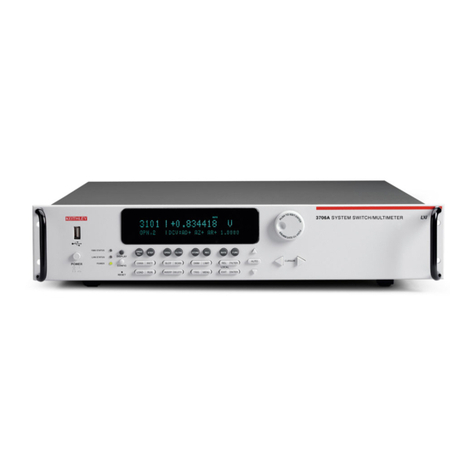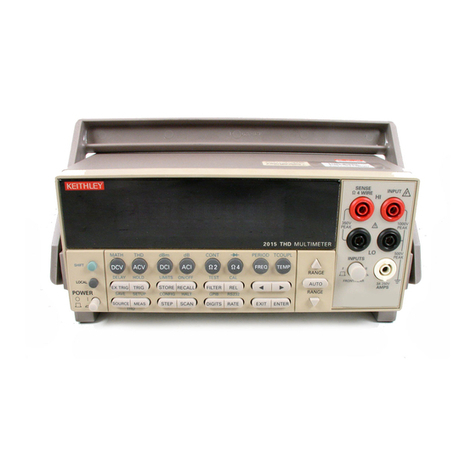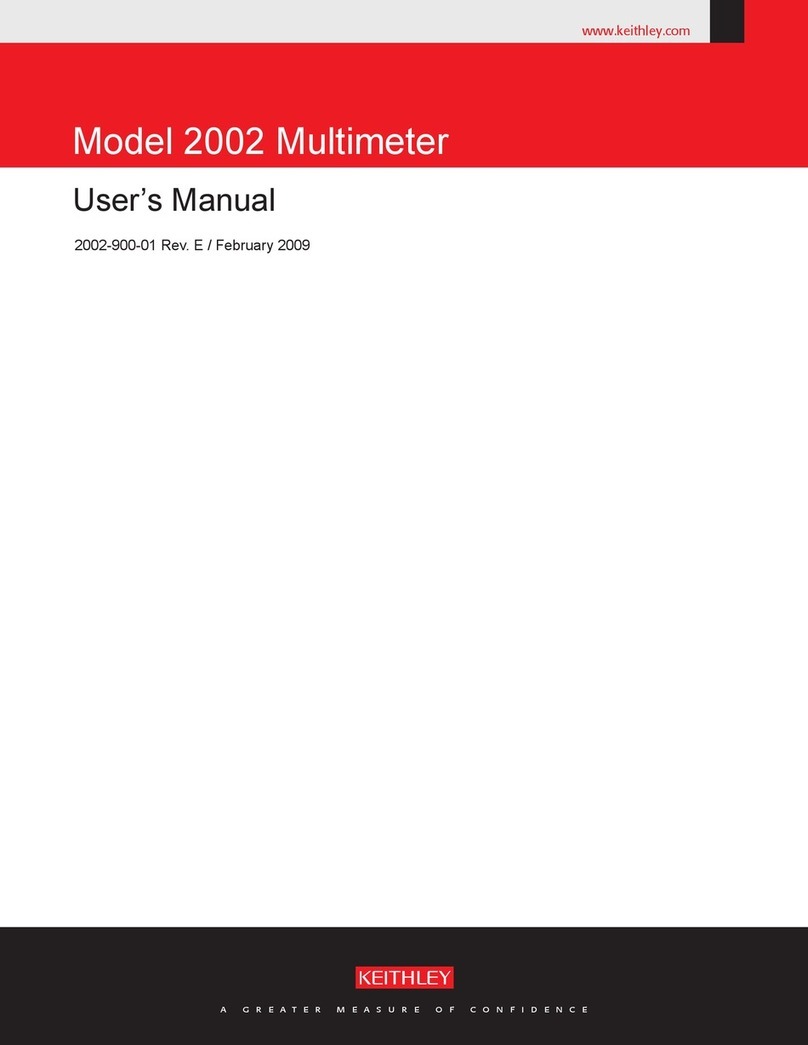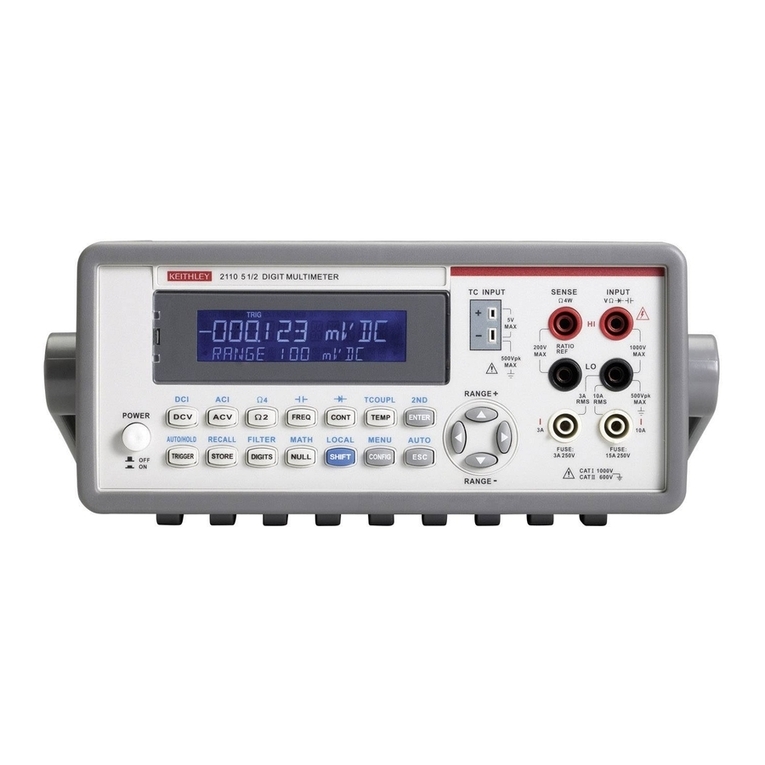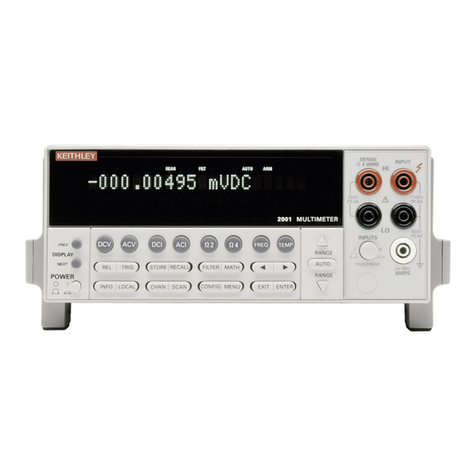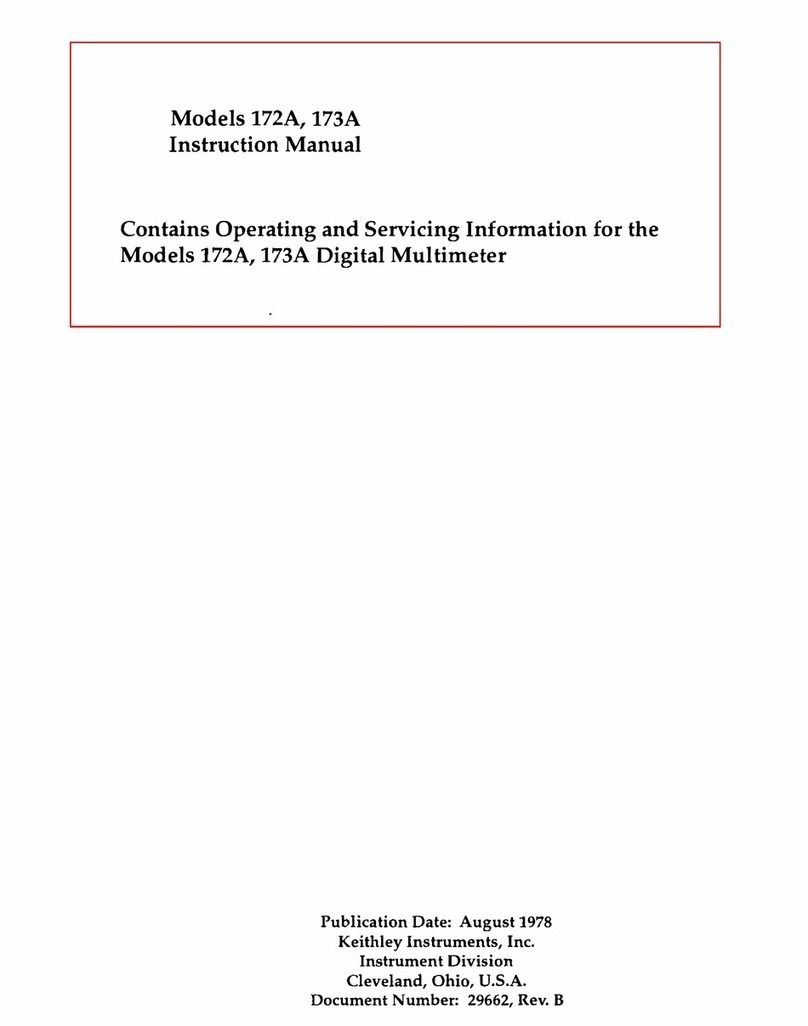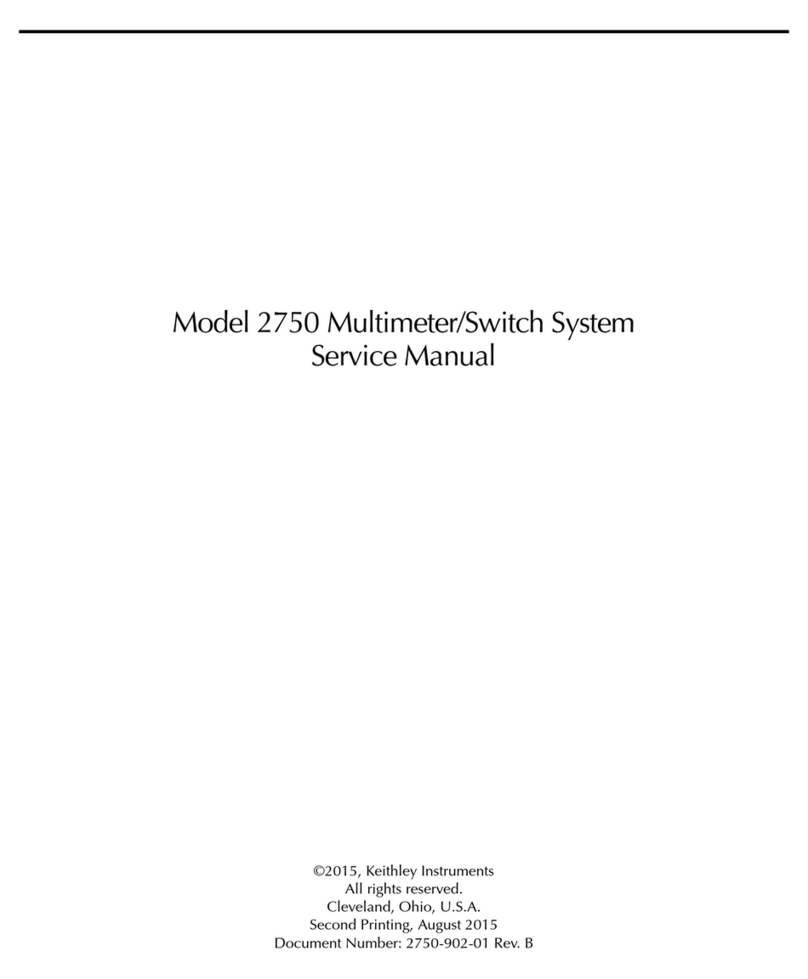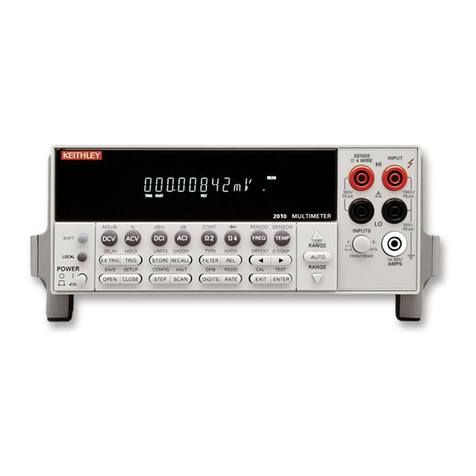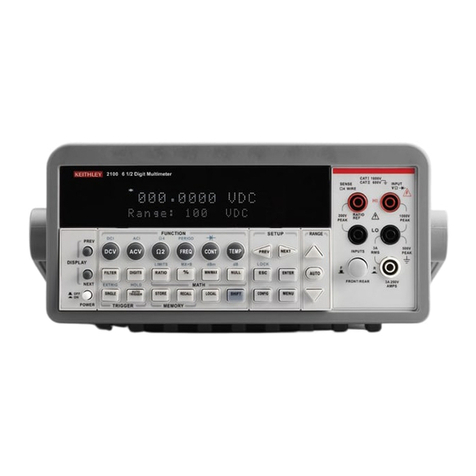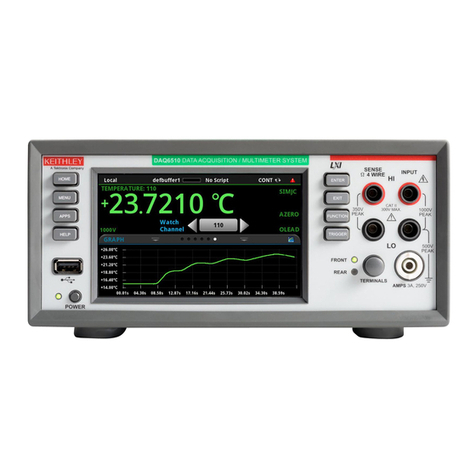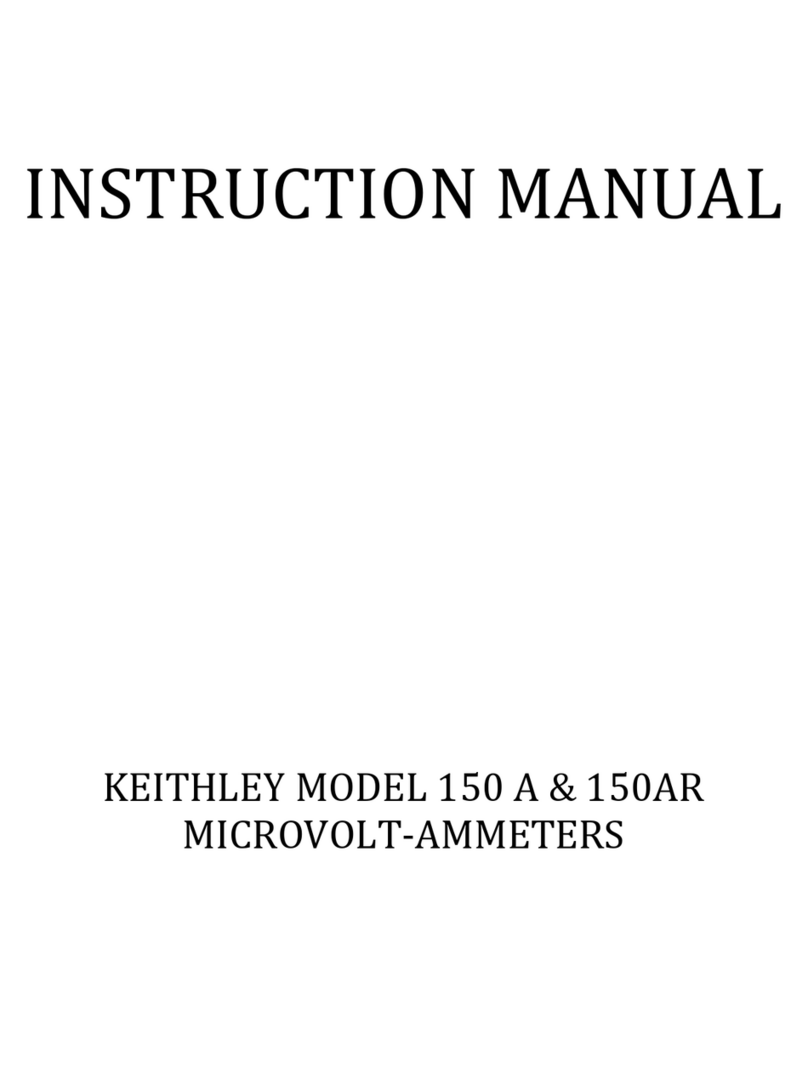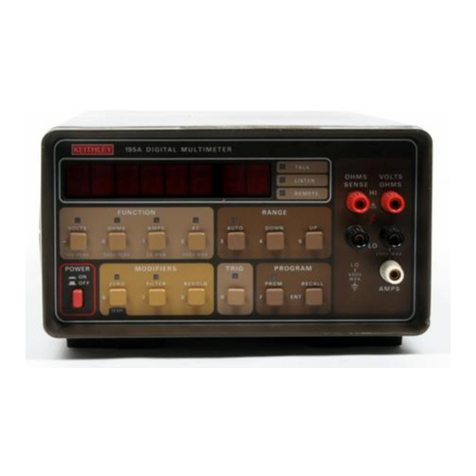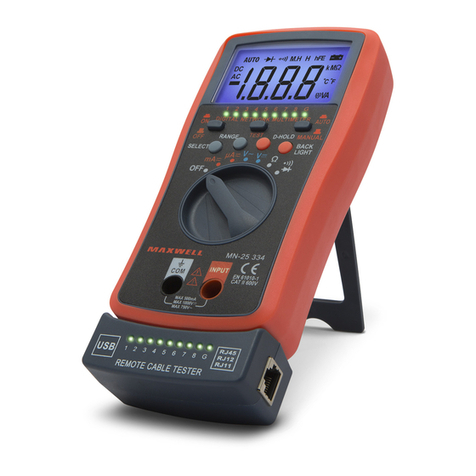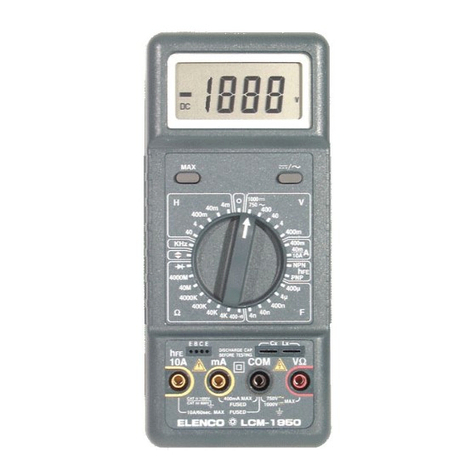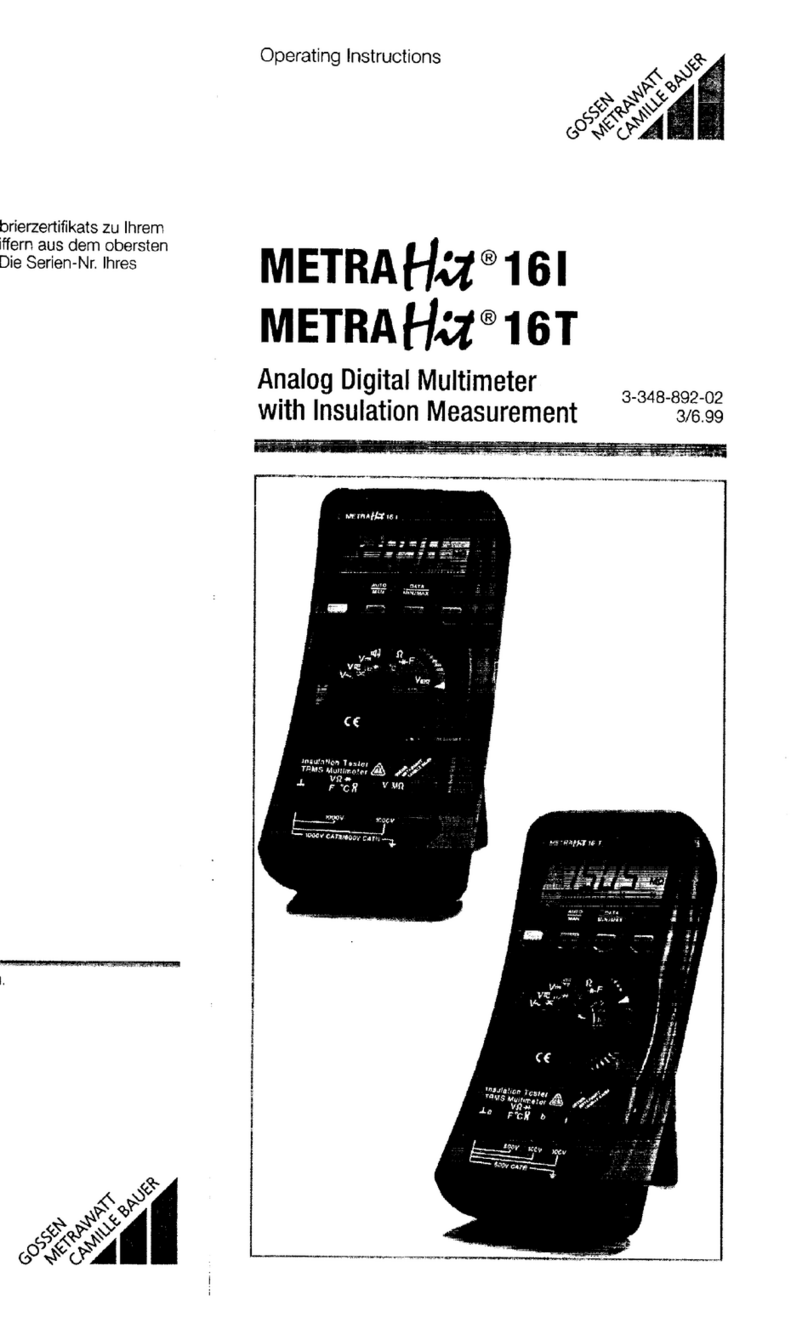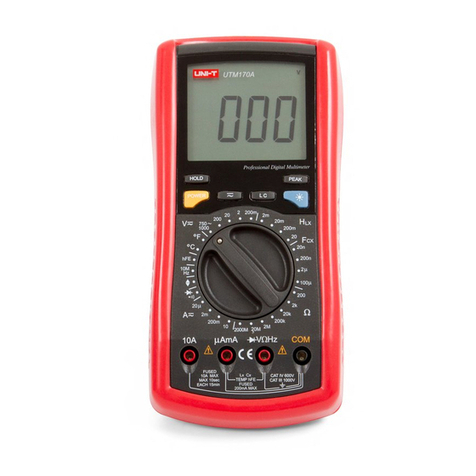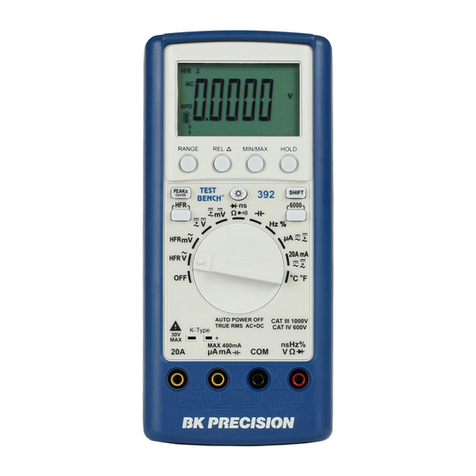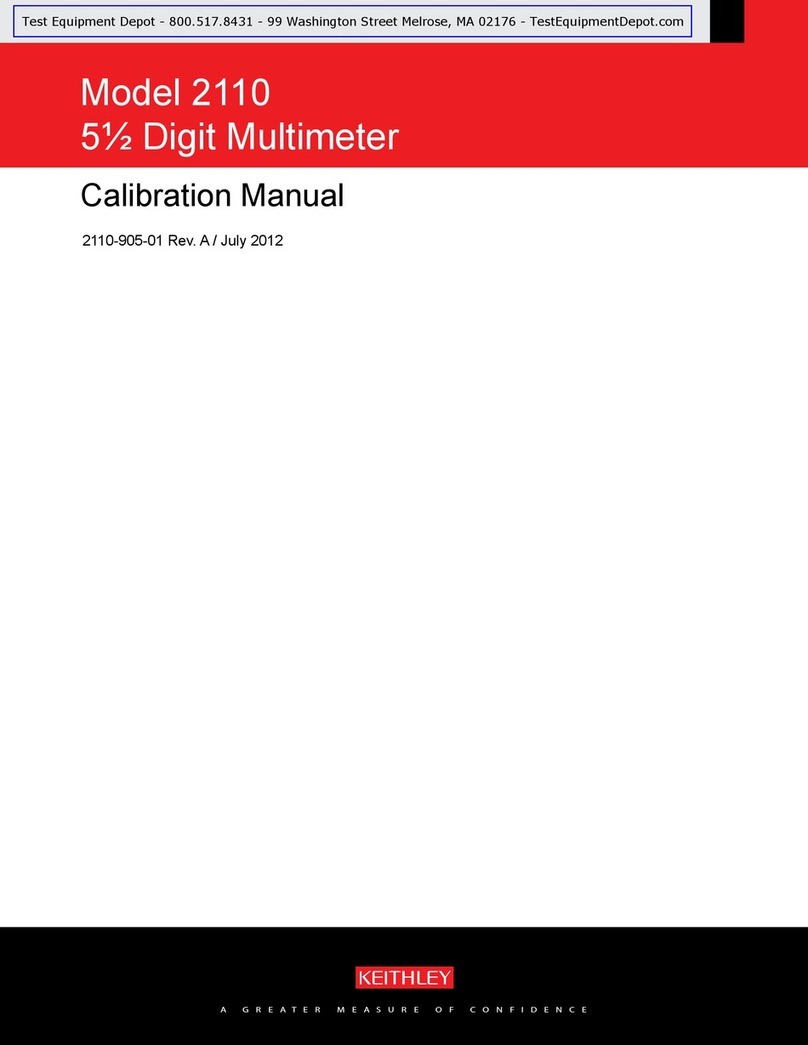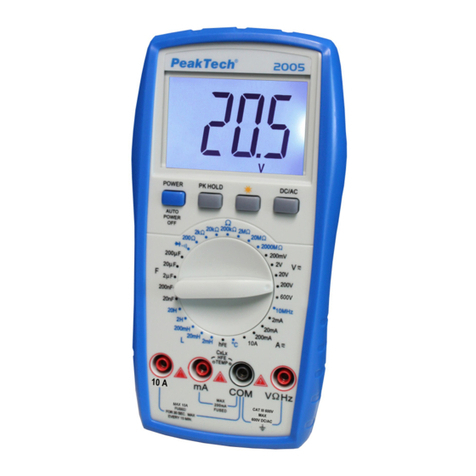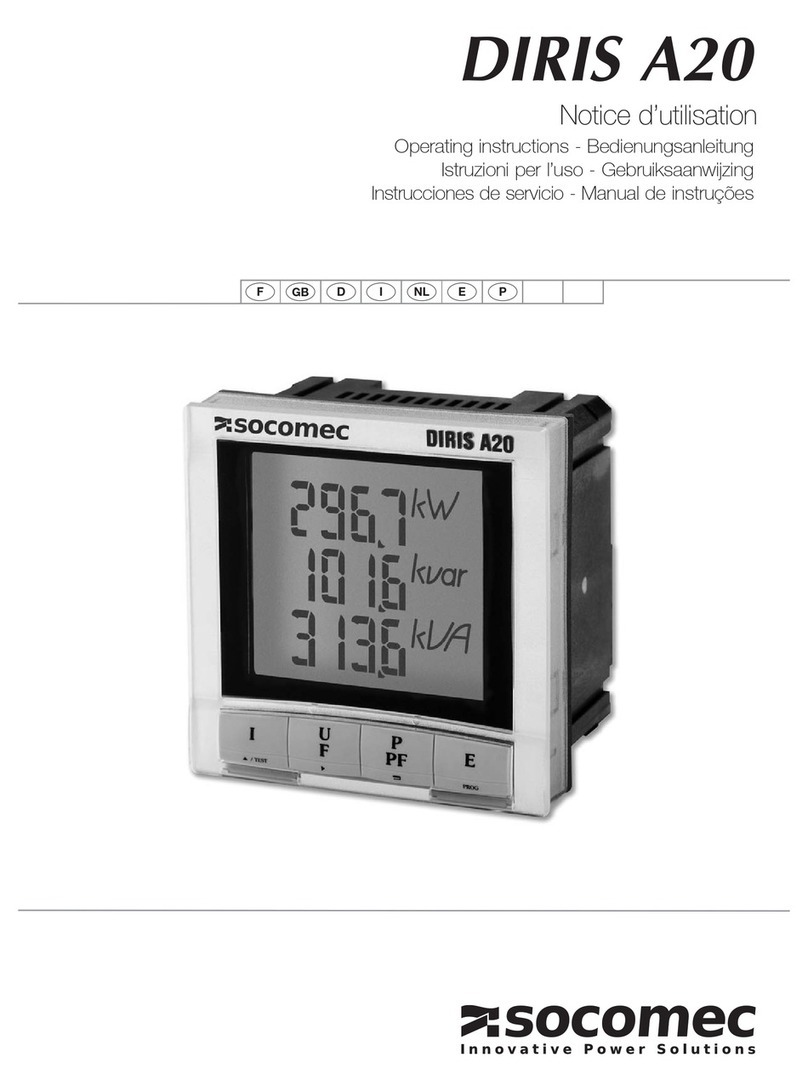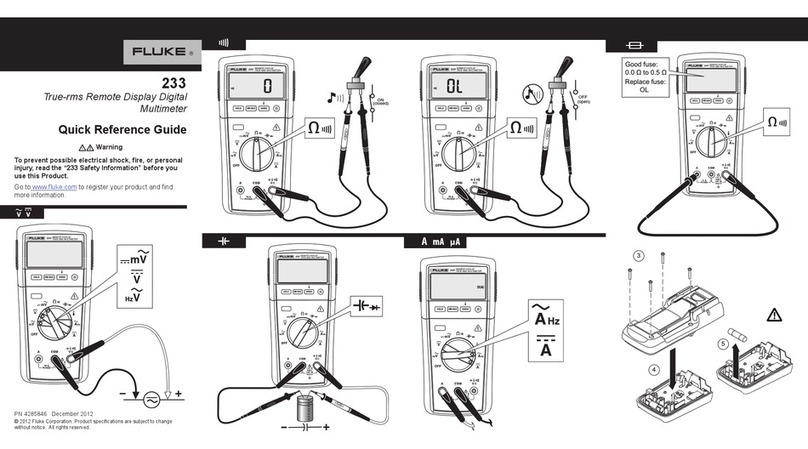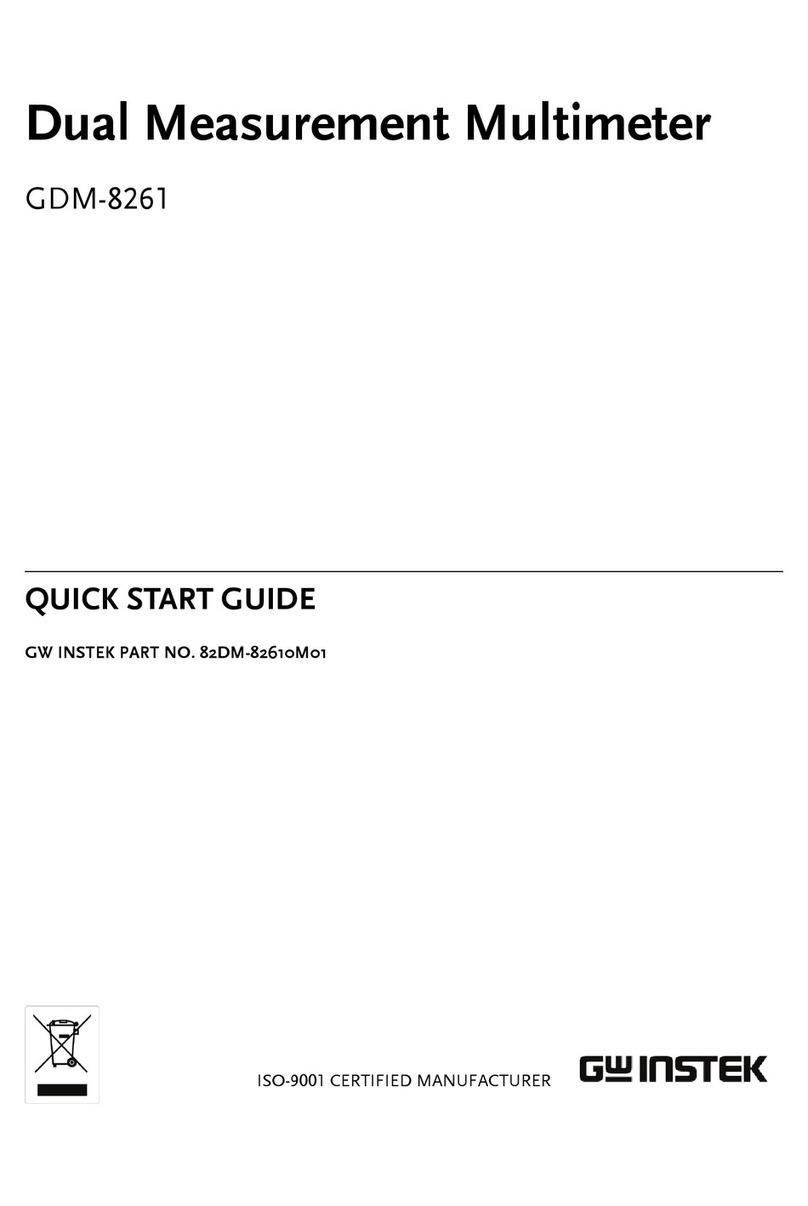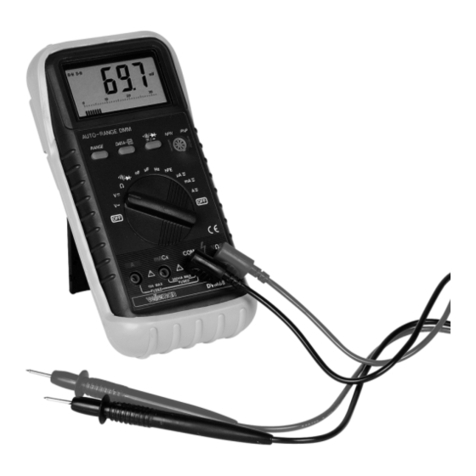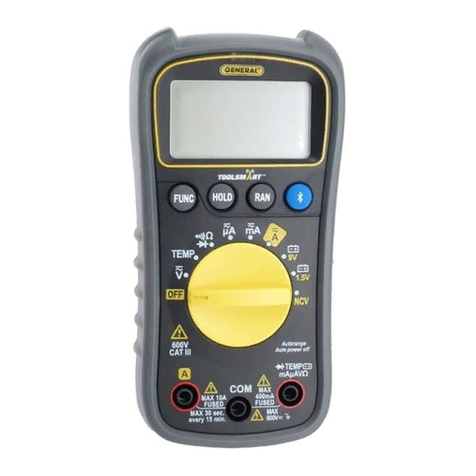
OPERATION MODEL 169
a. Numerals. Large 0.6" numerals display up to a
maximum of 1999 counts. Leading zero is only sup-
pressed for most significant (l/Z) digit.
b. Decimal Point. The decimal point is indicated
in three positions and implied when behind the least
significant digit. The decimal point is properly
positioned when a range pushbutton is pressed.
C. Overrange. A "1" followed by three blanked
digits is displayed as an overrange indication for
all ranges and functions, except the 1000 volt
ranges which read beyond their maximum allowable
input voltages. The minus sign and a decimal point
may also be displayed, if appropriate.
d. Polarity. For dc measurements the minus sign
(-) is displayed, positive is implied. The minus
sign may flash on any function at zero since it is
not suppressed. It is also normal for it to flash
in ohms while the instrument is recovering from
overrange.
e. Low Battery Indication. BAT is displayed when
approximately 5% of battery life remains. This
indicates that the batteries should be replaced,
however the Model 169 will continue to operate pro-
perly for 40 hours if alkaline cells are installed,
or 20 hours if carbon-zinc cells are installed.
f. Function and Range Annunciators. These indi-
cators provide a continuous display of the selected
funCtiOn and range, and allow direct reading of the
display. For example: a displayed half-scale ac
current on the highest current range would read AC
IOOOmA.
NOTE
Extended exposure of the liquid crystal
display to direct sunlight, or high tem-
perature and high humidity conditions can
cause the display to temporarily blacken.
Also, the display may become sluggish if
exposed to extremely cold temperatures.
Even though recovery occurs at normal
Operating temperatures. these conditions
should be avoided for maximum display
life.
Z-10. Front Panel Switches.
Z-11.
Control of the Model 169 is provided by
eleven pushbutton switches which are color coordi-
nated to the front panel. These switches are shown
in Figure 2-3 and described as follows.
a. ON/OFF Pushbutton. Push on - push off switch
that, when in, applies power to the DMM.
b. Function Pushbuttons. The four function push-
buttons provide selection of the five functions of
the Model 169. AC/DC is a push on - push off switch
that selects whether the function is ac or dc, in
for ac or out for dc. When ac is selected, the AC
annuncmtor is on. When the annunciator is off, dc
is implied. The AC/DC pushbutton is not effective
when ohms (0) is selected. The Y, A and " push-
buttons are push-on switches that select volts,
amperes and ohms, respectively. Pressing one of
these pushbuttons all the way in selects the new
function, turns on the proper annunciator and can-
cels the previously selected function. Note that it
is possible, by forcing, to push two pushbuttons in
at the same time. This will be evidenced by con-
flicting range/function annunciators appearing, and
the unwanted function can be canceled by pressing
the desired function pushbutton again.
c. Range Pushbuttons. The six range pushbuttons
are push-on switches which select the new range and
cancel the previous one. The decimal point is posi-
tioned and the appropriate annunciator is turned on
when the range is selected. The 20M pushbutton is
only used for ohms function. If it is inadvertently
selected with volts or current, contradicting annun-
ciators will appear.
2-12.
Input connections.
Z-13. Two banana jacks provide the input connec-
tions to the Model
169.
The HI (red) jack is the
high impedance input and is normally connected to
the point in the test circuit most removed from sig-
nal or earth ground. The LO (black) jack is the
common or low inout.
2-2



















